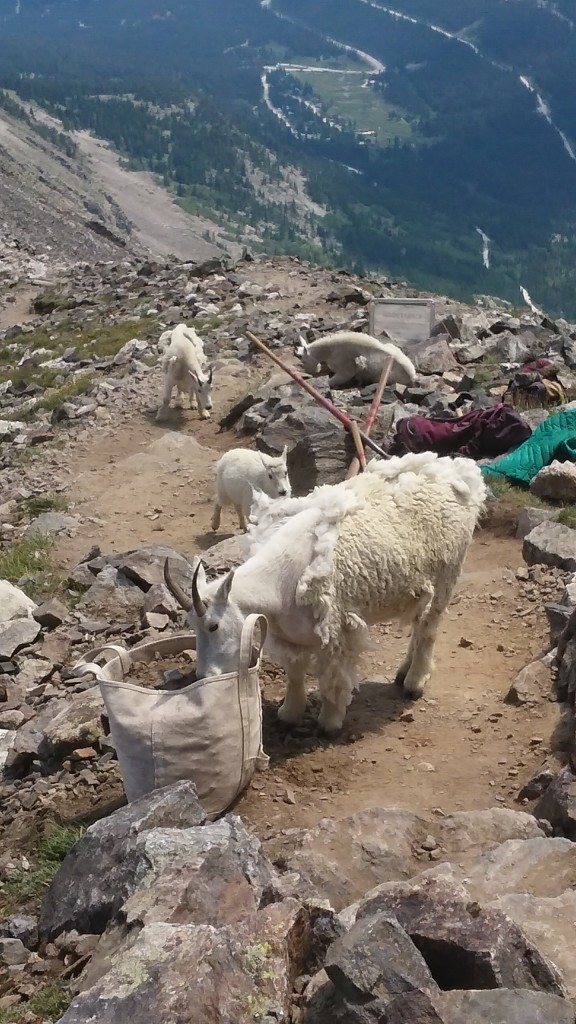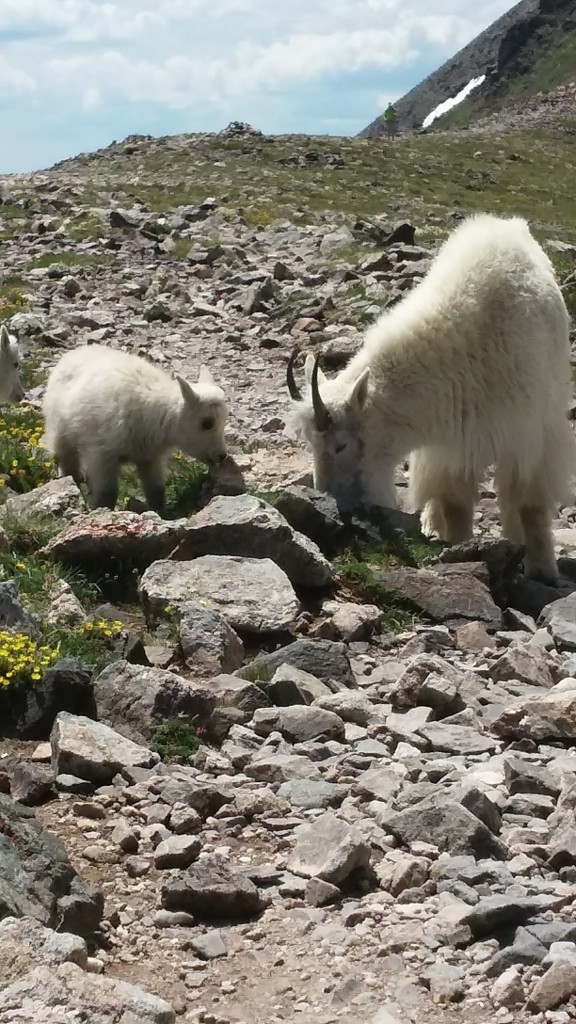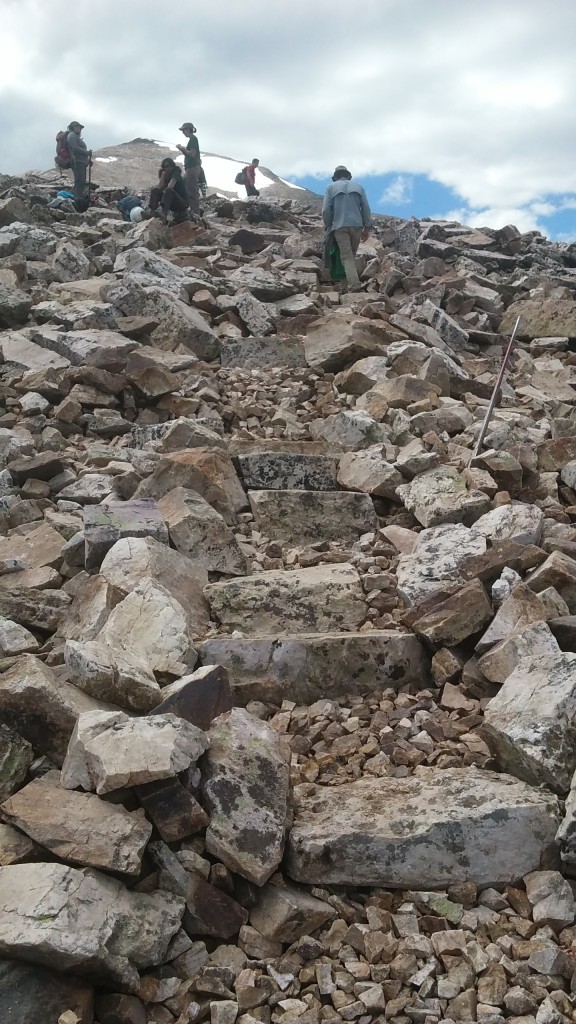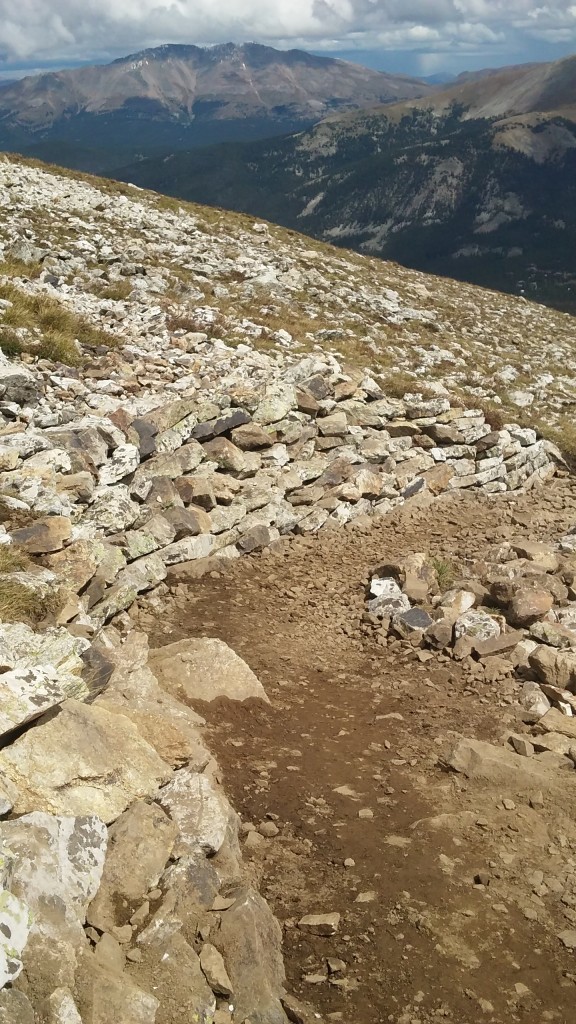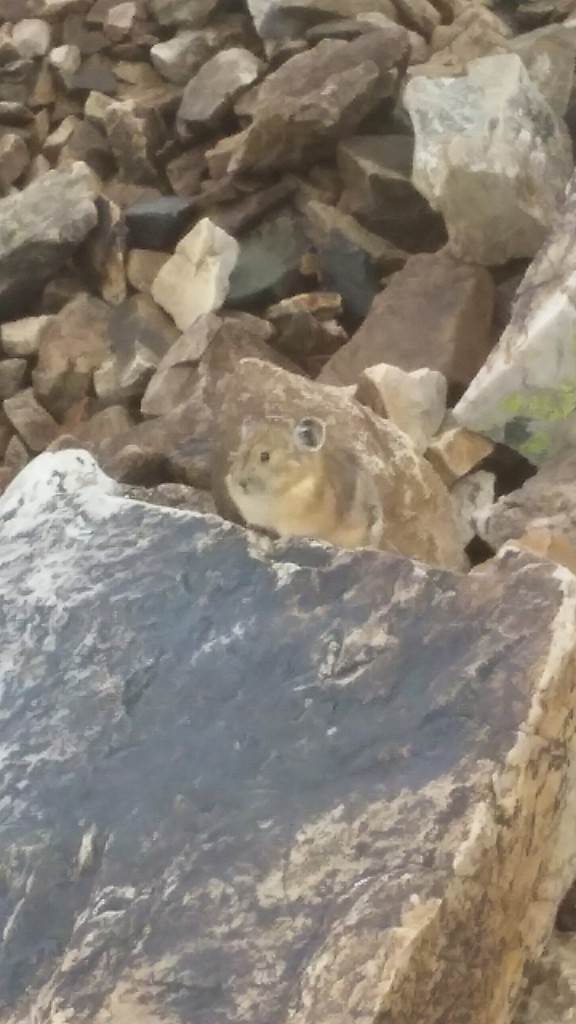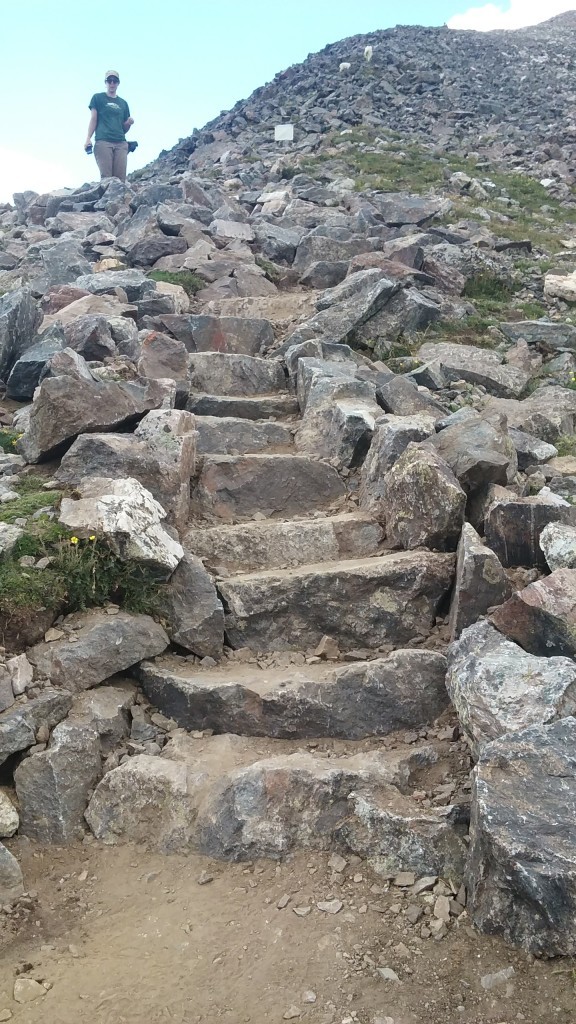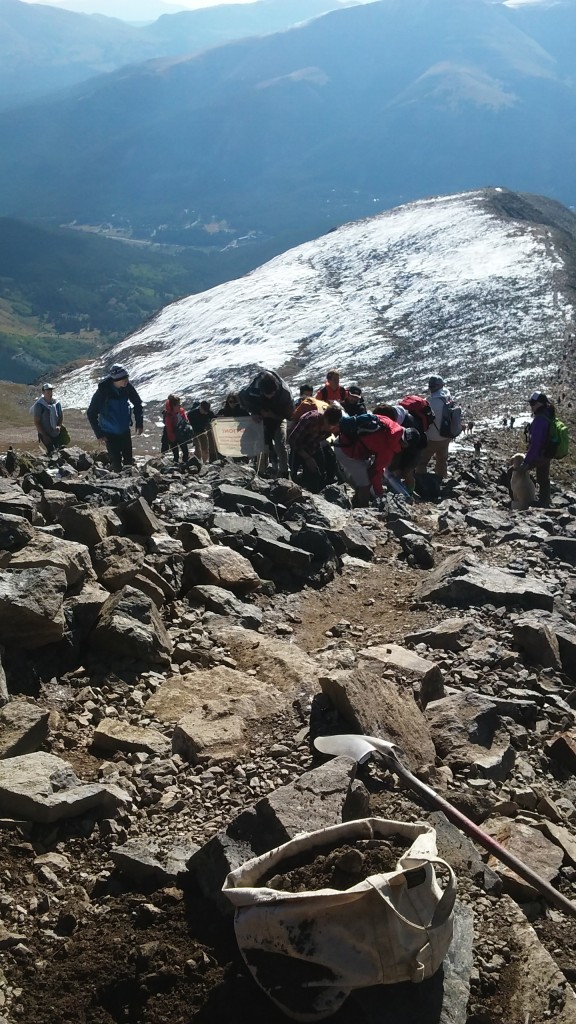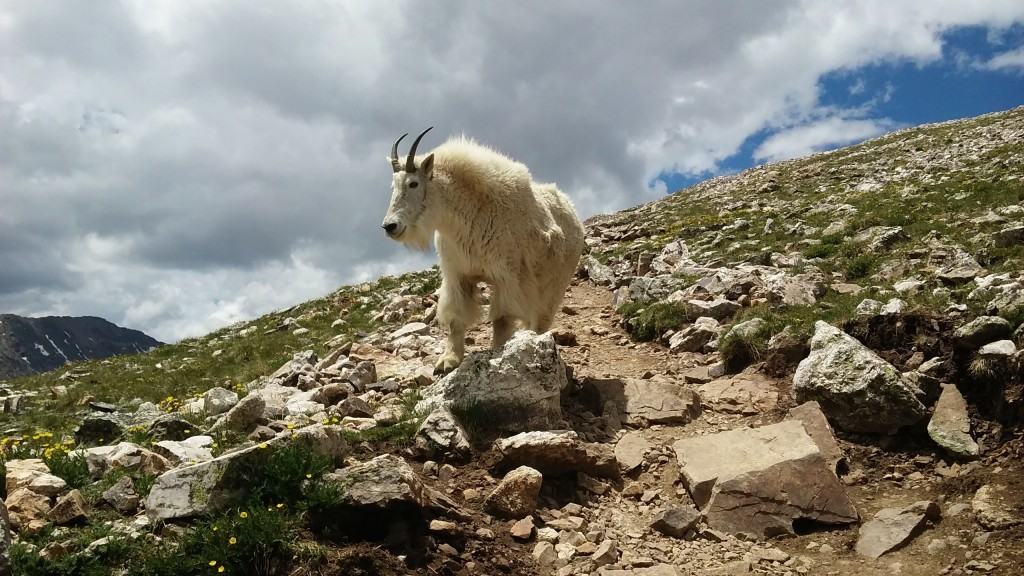A: These bags of dirt that hikers often see on the side of a trail that’s being worked on are in fact dirt bags. We typically use these dirt bags to temporarily store dirt in them while we are working on a site, so this precious soil doesn’t blow away with the wind or get kicked away by hikers or goats. The dirt comes from the hole next to the dirt bag, or under the rock we have set in it’s place, amazing. No, we didn’t carry the dirt up the mountain, it wasn’t helicoptered in, and we are not going to carry it down the mountain. This might seem obvious to some of you, but believe it or not, this is our most frequently asked question this summer. Hikers (and sometimes mountain goats) are fascinated with these dirt bags.
Q: So, are these goats aggressive
A: No, the mountain goats that people often encounter on Quandary and other peaks throughout Colorado are not aggressive. There has been rampant rumors we have heard this summer about hikers being gored to death in Colorado by mountain goats. This is false, you can stay on the trail and keep walking towards the goats, they will get out of your way. They casually graze in the alpine and frequent trails and where people congregate. The goats are after your urine, not your blood.
Q: When are you going to put the escalator in?
A: We aren’t.
Q: How did you two get up here?
A: Hikers have asked if we have been dropped off in a helicopter, taken a mule or horse up or even taken a vehicle (there is no road on this steep mountain). We hike up, just like everyone else. One trip up, and one trip down, every work day. No, we don’t camp at our work site above 13,500 ft. We camp in the safety of the forest, and have a lovely commute to and from work.
Q: What are the mouse looking critters running around on the rocks?
A: These are pikas, basically tiny alpine bunnies. They are adorable and the creatures responsible for all the squeaks coming from the talus.
Q: What are you mining for?
A: We are not mining in the middle of a busy summit trail up a 14er. We find gold all the time though, that’s why we keep coming back to this job. Just kidding. We mainly just find more dirt and dirty rocks, sometimes they’re shiny. The real treasures we find are perfect step, crib or retaining wall rocks.
Q: So, are you guys just moving rocks?
A: No, we are not playing minecraft. We are moving these small boulders for a reason. It’s for setting as a check step, a piece of retaining wall, to crib in a step, hold back some back slope of a trail or some other use we have found.
Q: Where did those rocks come from? How did you move them?
A: Those rocks in the trail that you walk on all come from that mountain, and probably not more than a few hundred feet away. To build steps, walls, and other structures in the trail, we have to find and move those rocks to where we want them. We don’t shape the steps by chiseling them out of the ground, we usually find them like that somewhere above our work site, and roll them down to where we set them. We try and use gravity as much as possible and retrieve these rocks from uphill of where we want them, and the two of us either carry or roll all of these rocks, nothing more complicated than that. We do our best efforts to avoid disturbing any vegetation while moving rocks. None of these rocks were helicoptered in or dropped off in a dump truck, as we have been asked.
Q: How did you get these tools up here?
A: We carried them! We didn’t have to carry our entire tool set up in one trip. A couple tools at a time, over a few trips, and that’s how our tools got up the mountain.
Q: When should I head down?
A: You should head down the mountain whenever you feel like heading down. Everyone’s comfort level and hiking speed is different, so you should know what is best for you, don’t let anyone else tell you that. The weather is constantly changing, especially at 14,000 feet. No two days are the same up here, unpredictability is the norm. There is no exact time when the thunderstorms start, just because the forecast on your phone says thunderstorms likely at three pm, does not mean that is a guarantee. Look around you and watch what the clouds are up to and make your best judgement.

